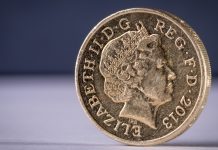GBP/INR has managed to recover a big chunk of losses incurred last week. Currently, one British pound buys 96.059 Indian rupees, up 0.35% as of 6:10 AM UTC, a few minutes after the UK’s Office for National Statistics (ONS) released jobs data.
The recovery started yesterday, with the pound being driven by Brexit optimism. Leaders from Britain and the European Union (EU) had a scheduled meeting on Monday. Both parties agreed that negotiations should end up with a deal. UK Prime Minister Boris Johnson admitted that an agreement might be on the horizon in July, though with “a bit of oomph.” The PM said:
“I don’t think we’re actually that far apart but what we need now is to see a bit of oomph in the negotiations … The faster we can do this the better, and we see no reason why you shouldn’t get this done in July.”
Johnson had a video conference with the bloc’s leaders, including European Commission President Ursula von der Leyen. Both sides agreed that new momentum was needed.
The EU noted that Britain didn’t want to change its mind on extending the deadline set for the end of this year. If the two fail to reach an agreement by the end of December, businesses on both sides will suffer the consequences of a no-deal rupture. For most economists, this is a worst-case scenario that might come on top of the coronavirus crisis.
UK’s Jobless Rate Unexpectedly Unchanged
Separately, the pound might leverage the recently published labor market data, even though most indicators are not inspiring much optimism. The number of UK citizens on company payrolls declined by 1.7% last month as the lockdown disrupted the labour market. Nevertheless, the unemployment rate was surprisingly unchanged at 3.9% over the three months to April. Analysts expected an increase to 4.7%.
As for the rupee, the currency is dragged down by India’s struggle with the economic consequences of the lockdown measures imposed at the end of March. Yesterday, the government reported huge contraction in May for both imports and exports, though the pace has slowed compared to April as the restrictive measures are gradually lifted.





